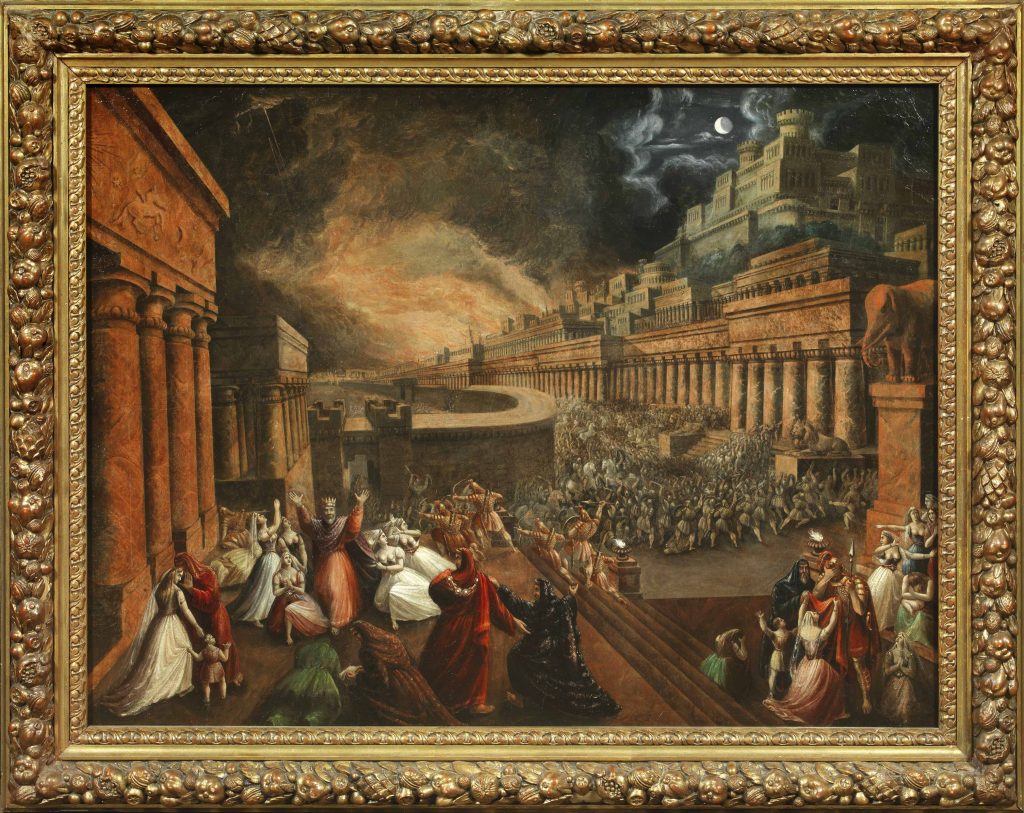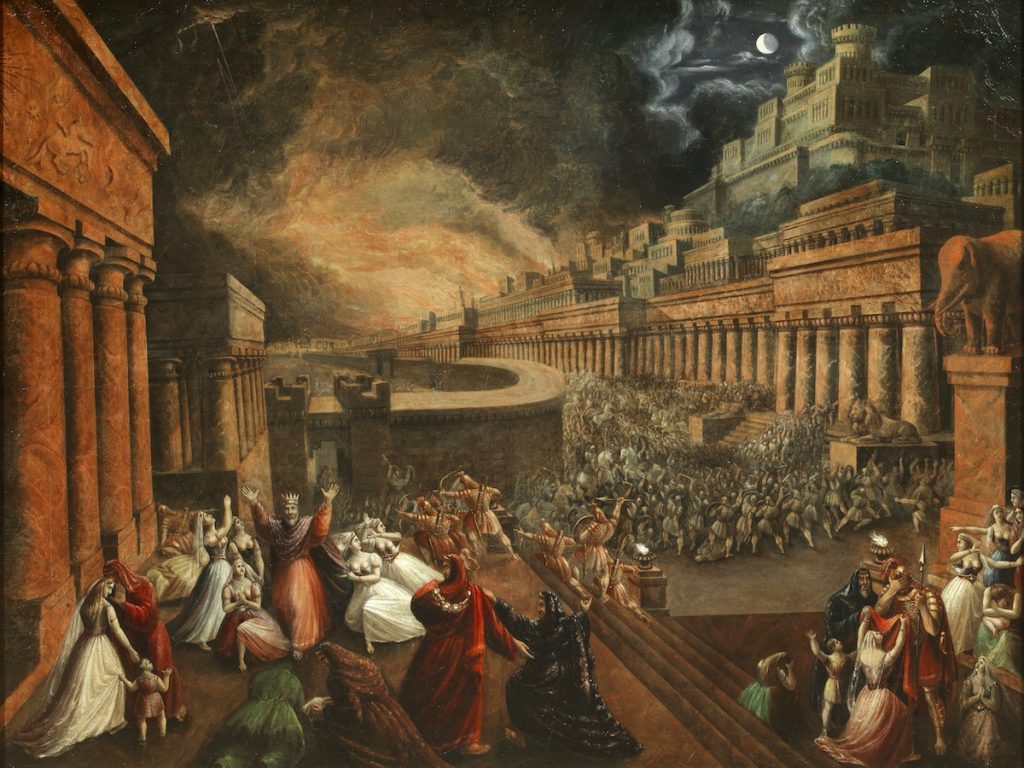JOHN MARTIN, school of
Haydon Bridge, 1789 – Isle of Man, 1854
The fall of Nineveh
oil on canvas, cm 110×85
The dramatic destruction of the city of Nineveh and the end of the Assyrian reign is a subject that could not but fascinate the romantic spirits of the first half on the nineteenth century, imbued with the poetics of the Sublime. Humanity’s dismay in front of nature’s mightiness, of history’s greatness and ineluctability, of the mind’s mysteries, expressed itself starting from the end of the eighteenth century, with artists like Johann Heinrich Füssli in Switzerland, Caspar David Friedrich in Germany, William Turner in England. John Martin, British painter specialized in paintings of catastrophic subjects, falls within this sensibility too.
Starting from the second decade of the nineteenth century, the artist found growing success and acknowledgments, a popularity that reached its peak with the 1820 painting Belshazzar’s feast, known in several versions. Martin often reproduced his creations with engravings, especially with the half shade technique.
There is a print reproduction of the painting in question that, as indicated in a study by Arabella Cifani, was made by an artist who was clearly influenced by the British artist, whose melodramatic ingredients are brought back, along with the taste for dilated spaces and gigantic architectures, an affinity for stormy skies and primordial atmospheres influenced by the excited visions of his fellow countryman Turner.


